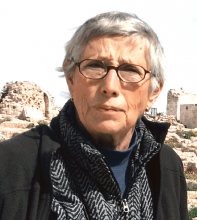You are here
Consequences of some ‘pipe dreams’
Feb 10,2016 - Last updated at Feb 10,2016
Turkey is using the ongoing build-up of Syrians fleeing fighting around Aleppo, on the Syrian side of its border to achieve three objectives.
The immediate objective is to maintain Ankara’s recently adopted policy of allowing Syrians to enter Turkey only if they have visas.
This has dramatically cut the flow of Syrians flying or taking ships from Lebanon with the aim of reaching Turkey and beyond.
Ankara claims to be honouring obligations to Europe by sticking to this policy. Turkey’s short-term aim is to give as much publicity as possible to the humanitarian disaster caused by the Syrian army’s Aleppo offensive, backed by Russian air cover, in the hope that international outrage will exert pressure on Damascus and Moscow to end the long-heralded campaign to retake the insurgent districts of Aleppo city, constituting about half its land area, with one-third of its population.
This is unlikely. The Syrian government tried and failed to regain Aleppo city in early 2015, and will not halt its current offensive at a time it could be successful.
Aleppo is the ultimate prize in Syria. Damascus cannot, and will not, let it slip its grasp.
Turkey’s longer-term objective is to create a humanitarian “safe zone” and “no-fly zone” for Syrian military aircraft on the Syrian side of the border. The idea of a “no-fly zone” has been finished off by the intervention of the Russian air force in the Syrian conflict. Nevertheless, Turkey sees the fresh flood of refugees as an opportunity to secure the “safe zone”, which is a pretext for taking control of a band of Syrian territory.
Once Turkey establishes control of someone else’s territory, it has a tendency to stay on: the occupation of Syria’s Alexandretta and northern Cyprus being two examples.
Turkey can also carry on with its 2011-2012 policy of exerting pressure on refugee men to take up arms and return home to fight government forces. This way, Turkey will keep up the flow of fighters on the battlefields without being accused of facilitating the transit of foreign takfiris through its territory to Syria and Iraq.
In this zone, Turkey expects the refugees to be provided with shelter, food and medical care by international humanitarian agencies already working in insurgent-held Idlib province and elsewhere. Turkey will keep open the Bab Al Salama crossing so these agencies can access the refugees.
By keeping the refugees in Syria, Turkey also reduces growing hostility among its own population to the presence of 2.5 million Syrians and shuffles off responsibility for new refugees who might attempt to travel to Europe through Turkey or by sea.
During German Chancellor Angela Merkel’s visit to Ankara last Monday, she and Turkish Prime Minister Ahmet Davutoglu agreed to propose a role for NATO in slowing and reducing the flow of Syrian refugees to Europe.
The idea is that NATO would survey and monitor refugee movements in the Aegean.
This is hardly a means to stop this migration.
Last November, the European Union agreed to grant Turkey 3 billion euros to ensure that Syrian refugees remain in Turkey. The bloc also promised to accelerate Turkey’s EU accession negotiations and visa liberalisation for Turks seeking to visit Germany.
Merkel, however, would not be drawn into fixing a firm timetable for the delivery of the funds, calling for “visible” proof that Turkey is eliminating bureaucratic obstacles and creating the infrastructure to provide for the refugees.
While Turkey has been the loudest to complain of the refugee burden of the three main host countries — Turkey, Jordan and Lebanon — the refugees constitute only a small proportion of the country’s 78 million inhabitants.
Ankara is hardly justified in complaining, as the refugee crisis is blowback from Turkey’s policy of fostering conflict in Syria by backing and hosting the “five-star hotel” expatriate political opposition, encouraging defection by Syrian army officers, training and arming opposition fighters, and facilitating the entry of foreign militants into Syria.
These policies transformed short-lived protests into an armed insurrection which morphed into a war that has engulfed Syria, led to the emergence of Daesh, Al Qaeda’s Al Nusra Front and similar takfiri movements, and drew in Iran and Russia on the Syrian government side, and Saudi Arabia and the Western powers on the anti-government side.
Turkey’s President Recep Tayyip Erdogan was motivated by his impossible dream of becoming a hegemon of the eastern Arab world by restoring the Turkish-Ottoman sphere of influence. Erdogan never imagined rejection of his project by the Arabs who drove out the Ottomans a century ago.
He fervently believed that this could be accomplished by forming an alliance with the Muslim Brotherhood in Egypt during its brief rule (2012-2013) and installing the Brotherhood in Syria.
He may even have thought that Jordan would fall to the Brotherhood if Syria did.
This was also an impossible dream because he simply refused to take into consideration the strong Shiite presence in Lebanon, Shiite fundamentalist domination of Iraq and the deep antipathy to the Brotherhood in the countries of the Arab Gulf.
Unfortunately, Syria and its neighbours now suffer the unintended consequences of the pipe dreams of the former footballer from the Beyoglu district of Istanbul, whose team plays home games in Kasimpasa Recep Tayyip Erdogan stadium, and a former prime minister, now president, who built himself a palace of 1,100 rooms that requires 1,500 guards.













